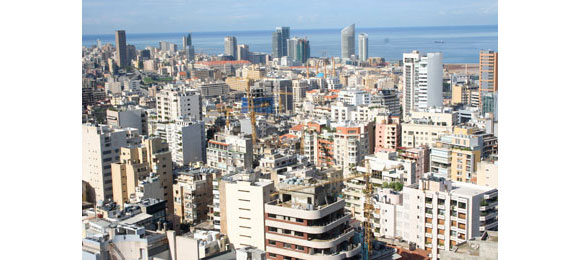When we speak about land tenure issues and challenges, we are quick to speak about complex, yet exciting concepts, such as cadastral registers and titling. For those working in the land community, these are the foundations upon which our work is built, essential to breaking the proverbial glass ceiling which so many face when it comes to claiming their land rights. We know that land is a prerequisite for unifying notions; human rights, self-determination and civic empowerment being but a few. For those fleeing imminent danger, war and conflict, land is somehow so much more personal than this. Access to a flourishing piece of land, perhaps a house that one that we can see and touch, provides urgent shelter from man-made storms, and by proxy, a sliver of psychological and emotional security.
Nowhere is this more apparent than in Lebanon. The country currently plays host to over one million Syrian refugees and one in every five residents in the country has sought refuge here from another part of the world. While memories may have been left behind in Syria, they are in search of what is now no longer available at home: access to adequate and safe shelter. At the onset of the Syrian crisis, host communities in Lebanon welcomed and supported many refugees, especially with the non-encampment policy adopted in Lebanon. The situation has created challenging bottlenecks in the Lebanese housing system, particularly in low income locales in Lebanon where most refugees sought shelter, thus multiplying the demand on low-cost housing multiple folds in areas where both availability and conditions of housing were already strained. A recent report by UN-Habitat and UNHCR confirms that housing and tenure security are the most serious concerns for most refugees in Lebanon, both in terms of quality and monthly cost. Poor quality shelter, overcrowding, and limited access to water, sanitation, and urban services are the norm throughout the country for the vast majority of vulnerable refugees. The study also pinpoints that shelter conditions are worsening, rather than improving.
Tala Kammourieh, Housing Policy Analyst at UN-Habitat Beirut offices, tells us the following: “The affordable housing crisis in Lebanon predates the arrival of Syrian refugees: In that sense, the ongoing affordable housing crisis that the Syrian refugees are facing in Lebanon presents an exacerbation of a trend that precedes the war in Syria.” She also speaks on the importance of finding viable solutions for the thousands of refugees who will be returning home to Syria in the future.
The First Arab Land Conference is one such forum where she and her colleagues hope to do this. The conference, hosted by the Dubai Land Department, UN-Habitat, the World Bank, the League of Arab States and the Arabian Union for Surveying, will take place in Dubai from the 26-28 February 2018. The conference will cover a wide range of topics such women’s land rights, land and business, land and technology, and of course, land, housing and refugee rights. While the conference aims to focus on topics pertaining to Arab land and poverty, global experts in addition to regional speakers will be hosted to provide a greater scope of awareness on global trends and affairs.
As long as Syrians are between homes, spaces such as these will be of vital importance in ensuring a viable way forward.
This blog is part of a series devoted to raising awareness of the key issues that will be explored at the First Arab Land Conference. To be part of the event’s discussions, follow the Twitter hashtag #arablandconference2018 or follow the handles @landportal @GLTNnews @UNHabitat @WorldBank

